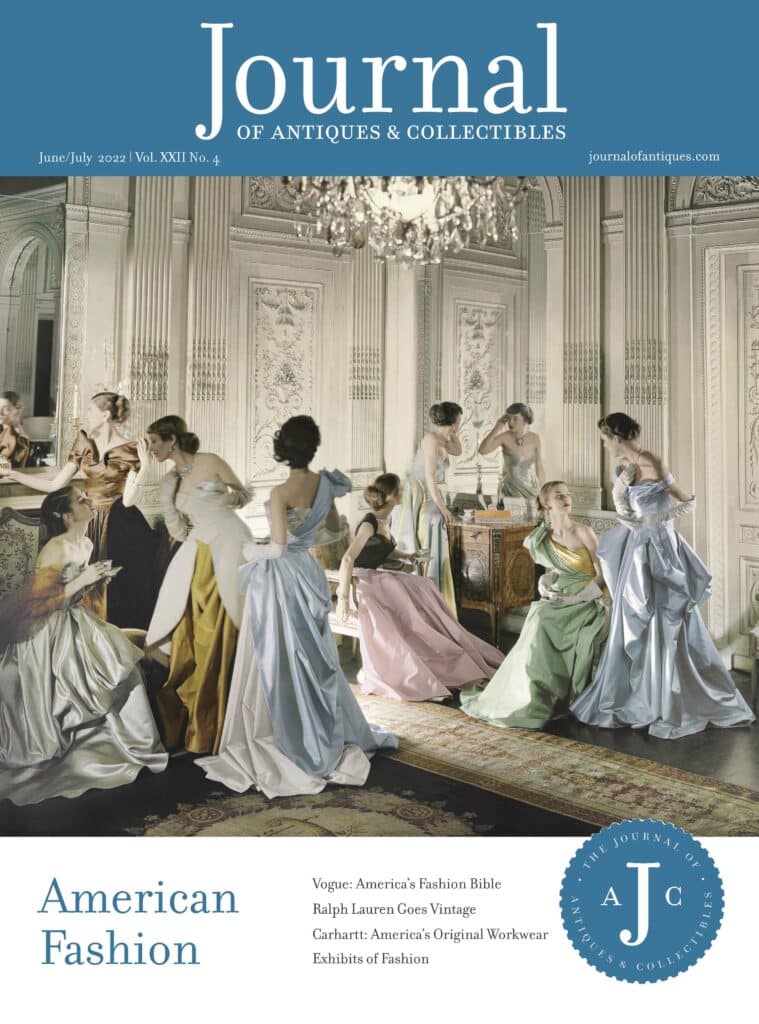Every year on the first Monday in May, everybody who’s anybody in the world of fashion and celebrity attends or watches on TV the famed Met Gala at the Metropolitan Museum of Art in New York City for what is referred to as the “Super Bowl of celebrity red carpets.”
Known as “Fashion’s Biggest Night,” this high-profile megawatt event was introduced in 1948 by fashion publicist Eleanor Lambert (who is also responsible for launching New York Fashion Week) as a way to raise money for The Costume Institute: a collection of costumes that theater designers could look to for inspiration. Tickets for the first gala were fifty dollars each (compared to today’s over $30,000/ticket price) and included a midnight supper.
Since then, the benefit, which also marks the opening of The Costume Institute’s annual exhibit, has grown in size, scope, and profile, raising millions of dollars a year to fund the department’s exhibitions, acquisitions, and capital improvements. In 2021, the gala raised a record-breaking $16.75 million!
Over the first few decades, the Gala was one of many annual benefits held for New York charitable institutions. Accordingly, the attendees of the early galas were almost entirely members of New York high society or the city’s fashion industry. That changed in the 1970s when then Vogue Editor-in-Chief Diana Vreeland joined the Costume Institute as a consultant.
From 1948 to 1971, the event was held at various elite venues in New York City, including the Waldorf-Astoria, Central Park, and the Rainbow Room. It was Vreeland, however, who was responsible for finding a permanent home for the annual gala at The Met. Vreeland is also responsible for expanding the guest list to include such high-profile celebrities such as Elizabeth Taylor, Andy Warhol, Bianca Jagger, Diana Ross, Elton John, Liza Minnelli, Madonna, and Cher, whose presence made the Gala one of the most important ‘must attend/must support’ charitable events of the fashion season and brought out the paparazzi.
In addition to who attends and what they wear, a main feature of The Met Gala is its annual theme, selected to coincide with The Met’s annual exhibition. Expected participants start work on their outfits as soon as the year’s theme is announced, as a lot rides on fashion designers and the celebrities, industry influencers, and models they dress for this event. No expense or extravagance is spared for the occasion. Both artistry and daring are on display.
It was Vogue’s Editor-in-Chief Anna Wintour, who took over as host of The Met Gala in 1995, who introduced the idea of the Gala theme. Over the years, The Met Gala fashion has gone from simple but elegant evening gowns and “white ties” to bold and elaborate costumes and looks designed and curated to attract media attention and make a statement. In 2019, Katy Perry dressed as a chandelier. In 2021, Kim Kardashian wore an all-black, head-to-toe bodysuit that also covered her face. Sarah Jessica Parker in 2018 wore a gold brocade dress with a flowing train and a headpiece that held a nativity scene. In 2018, actress Blake Lively wore a regal Versace gown that featured a flowing train that took 600 hours to make.
While these Red Carpet spectacles capture the paparazzi and the public’s attention, not everyone in the fashion industry sees them as positive for fashion or for the event. Clothing Designer Tom Ford is quoted as telling former New York Magazine editor Amy Odell for her upcoming biography on Anna Wintour that The Met Gala had “turned into a costume party.” “[The Gala] used to just be very chic people wearing very beautiful clothes going to an exhibition about the 18th century … You didn’t have to look like the 18th century, you didn’t have to dress like a hamburger, you didn’t have to arrive in a van where you were standing up because you couldn’t sit down because you wore a chandelier.”
This year’s theme for The Met Gala and subsequent museum exhibition is, In America: An Anthology of Fashion. The dress code for the May 2nd Gala was “Gilded Glamour,” which takes inspiration from The Gilded Age in New York during the time period between 1870 to 1890.
The term “fashion” implies a look defined by the fashion industry as that which is trending. To see what’s trending, generations of women have turned to the pages of Vogue magazine for inspiration and aspiration. In this issue, we explore Vogue’s 130-year history and its role as the advocate and archivist of modern American fashion. We also take a look at American apparel company Carhartt, Inc., founded in 1889 and known for heavy-duty working clothes.
And, we share the story behind the newest collection introduced by the House of iconic American designer Ralph Lauren, which leads with a cultural fashion reference to the dress at historically African American colleges in the 20th century.
This year’s Met Gala theme, In America: An Anthology of Fashion, could not be better timed for this issue, as fashion exhibitions and retrospectives that showcase American design and craftsmanship through the centuries are opening this year across the country. Judy Gonyeau has comprised a list for you on page 30.
While fashion took a hit during COVID, with buyers shifting from high fashion to at-home leisurewear, and vintage rather than haute couture, the lights are up again along fashion’s most fashionable runways, and fashionistas across the country are excited to come out and play again to strut their stuff for Instagram moments.
Maxine Carter-Lome, Publisher





Related posts: